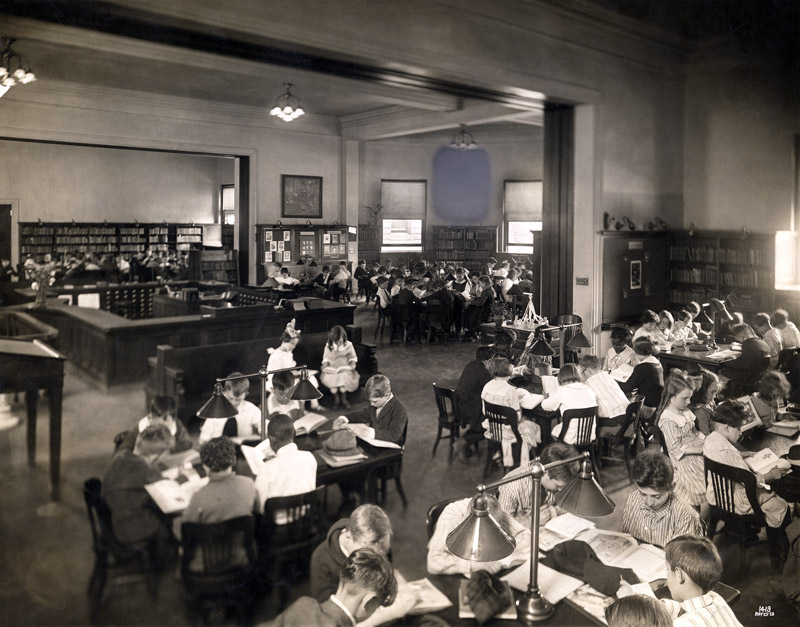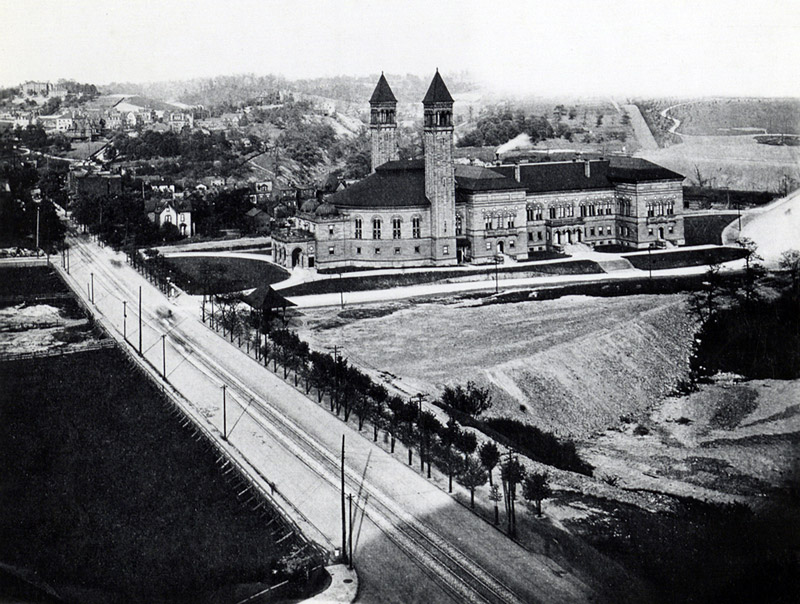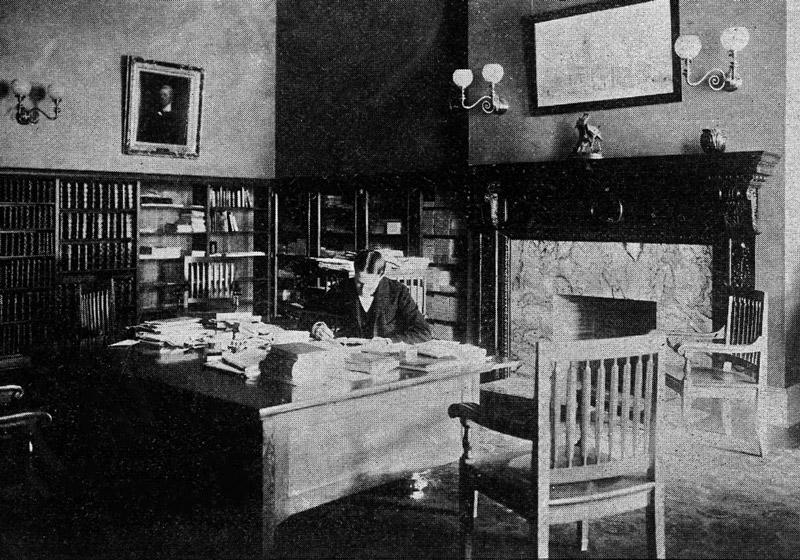1899 June 1

The Wylie Avenue Branch opens. An estimated 1,000 children visited the branch on its first day.
1899 February 1
The West End Branch opens and introduces something brand new for libraries: a story hour for children. The program proves so popular, that it’s soon expanded to Main and the other branches.
1898 December 1
Andrew Carnegie offers to pay for an addition to the original building so the library can use the entire space, with the new areas to house the Art Gallery & Science Museum, plus add a foyer to the Music Hall. Initial costs were estimated at $1.75 million; by the time it’s complete, Carnegie donates $5 […]
1898 July

The Home Library program begins delivering wooden boxes full of books to homes in neighborhoods without library branches. A volunteer visits each home weekly to read to children, talk about books, and tell stories.
1898 May 11
The Lawrenceville Branch opens, built on land donated by Stephen Foster’s family.
1898 April

The Children’s Department, which will overseee services at Main and branches, is established. It is believed to be the first fully organized Children’s Department in public libraries.
1896 February 1
The Periodicals room is converted to a children’s reading room since the original building plan neglected to include a space dedicated to children.
1895 November 5

The completed Carnegie Institute, housing the Library, Art Gallery, Science Museum, and Music Hall was dedicated with ceremonies and a weekend of concerts at the Carnegie Music Hall.
1895 April 1

Edwin H. Anderson becomes the first Librarian of the Carnegie Library of Pittsburgh after serving as director of the Carnegie Library in Braddock, which opened in 1889. Anderson left CLP in 1904 and eventually became director of the New York Public Library.
1893 July
Construction begins in earnest for Carnegie Public Library in Oakland, then the geographical center of the city, though it was undeveloped at the time.

